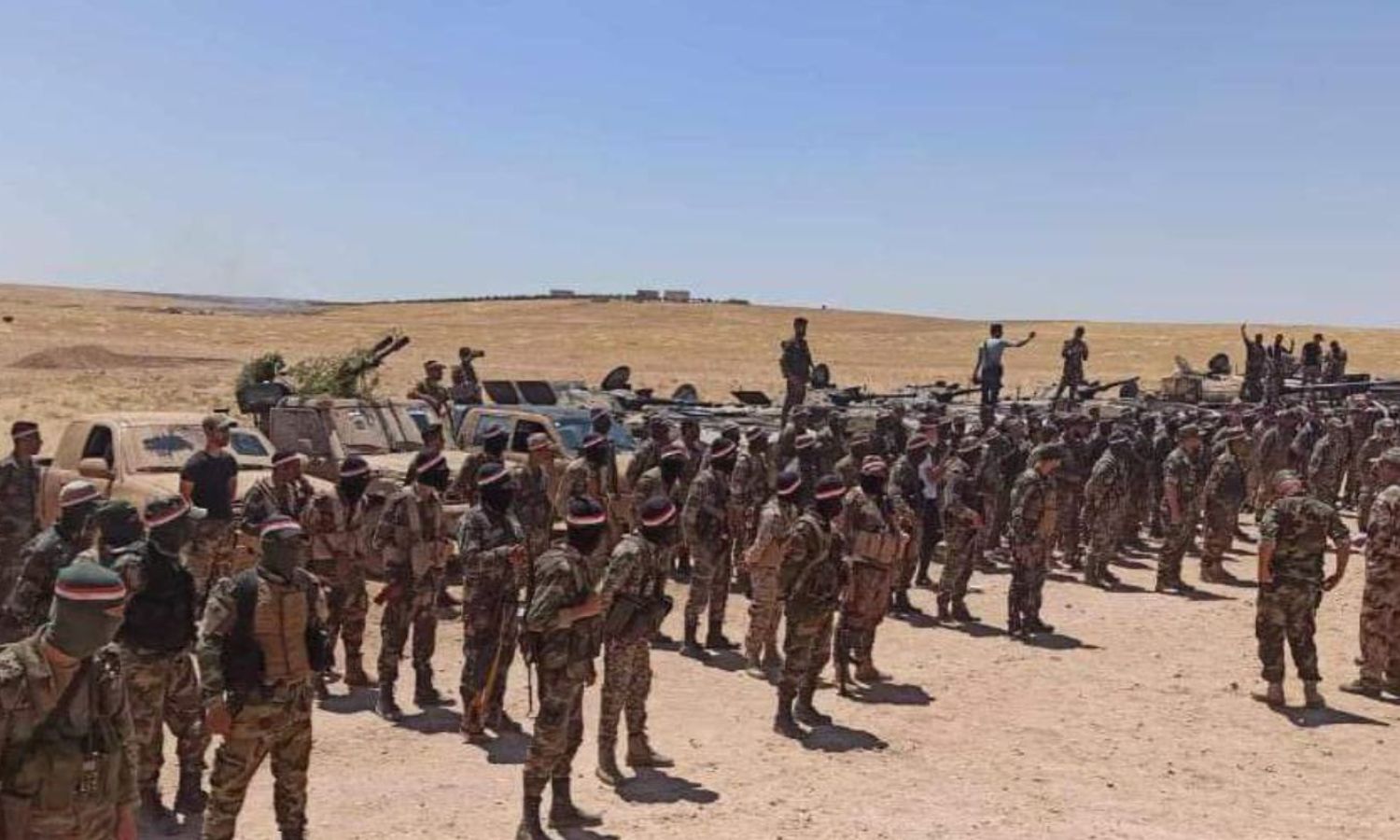Since September 2015, the Syrian regime has been supported by its Russian ally, altering the dynamics of the conflict significantly. After initially facing losses in territories held by opposition groups, Russia’s intervention, particularly through the deployment of warplanes, shifted the balance of power in favour of the regime, allowing it to establish control over key areas with the help of military formations designed to bolster the regime.
In southern Syria, particularly in Daraa—the cradle of the peaceful popular movement against the regime—Russia established and backed the Fifth Corps. However, changes in the situation on the ground, coupled with Moscow’s engagement on another front opened over two years ago, prompted a shift in Russia’s military strategy in Syria. This strategy involves not only the deployment of its direct forces but also its support for other groups.
A recent development in this context is revealed by a leaked document, which was obtained by Al-Quds al-Arabi. According to the document, there is a Russian directive aiming to halve the size of the Fifth Corps, a key Syrian military formation under Russian control. This reduction, motivated by cost-cutting measures, follows an order from Russian President Vladimir Putin.
Syria Today – Message to Israel? Russia Deploys Forces in Golan Heights
Al-Quds al-Arabi reports that in April 2023, General Valery, commander of the Russian operational group, communicated to Munther Saad Ibrahim, the commander of the Fifth Corps, and the head of the Military and Security Committee in Idleb, that Russia plans to reduce the Fifth Corps and its affiliated groups by 50% starting from July 2023.
Sensitive timing
This development coincides with Russia escalating its military operations in Ukraine, continuing its invasion that began on February 24th, 2022.
Ukrainian authorities anticipate potential significant aerial assaults from Russian forces. “We do not rule out large-scale and powerful air attacks by the enemy; however, we are prepared to repel and destroy enemy air targets,” stated a spokesman for the Ukrainian Air Force Command on national television.
During a briefing on April 4th, a Ukrainian military official highlighted the urgent need for Patriot air defence systems, pointing out the insufficient firepower currently available. “Repelling an adversary like Moscow necessitates more missiles and air defense systems,” he explained.
According to a report by the US Institute for the Study of War, Moscow might step up its mechanized assaults before the spring weather clears the muddy terrain, complicating robotic maneuver warfare. Additionally, Russia could increase automated attacks to capitalize on the current shortage of Ukrainian military equipment, ahead of the expected arrival of Western security assistance slated for April 4.
Why now?
Nader Khalil, a researcher at the Omran Center for Studies, explained to Enab Baladi that the timing of the document’s emergence might be connected to regional or international developments influencing Russian strategic or military priorities.
According to Khalil, if the document leak was orchestrated by the regime, it could be seen as signaling to the Gulf and the West amidst increasing Iranian influence, which has risen as Russian influence declines and is supplanted by Iran.
Khalil also pointed out that the reasons for reducing Russian support since mid-2023 are likely tied to the impact of the Ukrainian war on Russia’s capacity in Syria. He noted that Russia’s deepening involvement in Ukraine and the significant material and human costs incurred there could further diminish Russian engagement in Syria.
Additionally, Khalil suggested that Moscow’s establishment of observation points along the border with the occupied territories represents an attempt to maintain a strategic influence card. This move enables Moscow to promote its presence as advantageous to the West. Without these observation points, the Russian presence in Syria would not be beneficial to Israel or the West and could even be detrimental, limiting Moscow’s ability to leverage its influence in Syria for political bargaining with the United States.
Military analyst Tarek Haj Bakri also highlighted the impact of the war in Gaza, suggesting it might lead to new alliances and strategic repositioning in the region relative to other parts of the world.
Haj Bakri further noted Russia’s attempts to modernize the Syrian army and transform it into a professional force, though these efforts have not yielded substantial results. He mentioned that Major General Suhail al-Hassan was moved from commanding the 25th Division of the Russian-supported Fifth Corps to leading the Special Forces. This transfer marked a shift from Russian to Syrian regime command, signifying possible changes in the internal dynamics and command structures within Syria.
This article was translated and edited by The Syrian Observer. The Syrian Observer has not verified the content of this story. Responsibility for the information and views set out in this article lies entirely with the author.


